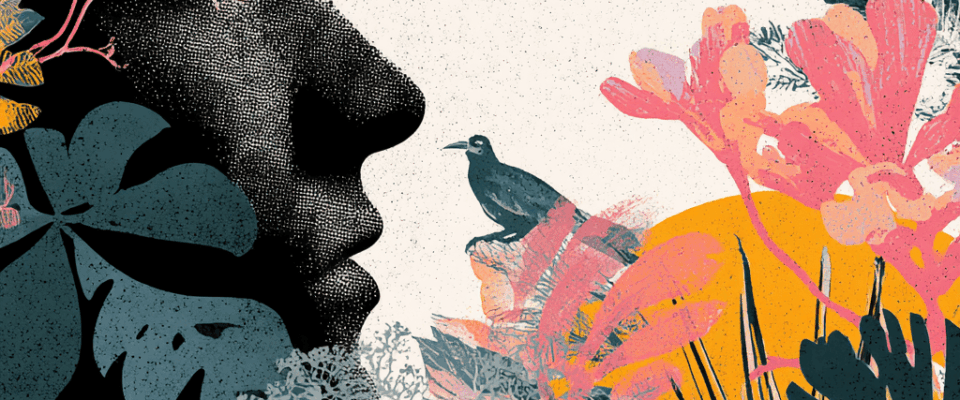There’s a reason why a single breath of fresh pine or damp earth can pull you back to a trail you hiked years ago. Smell is our most ancient sense — directly connected to memory, emotion, and that simple human need to feel grounded. For hikers, this connection is more than poetic. It’s a tool that can deepen how you experience nature and stay truly “here and now” when the forest calls.
Every time you walk through a pine grove or pitch a tent near mossy rocks, your brain collects scent clues. Later, a whiff of those same notes — pine resin, cedar chips, forest moss — triggers vivid memories of the path, the campfire, the dawn mist. Understanding this sense means you can use it to create stronger bonds with the places you love.
The science behind your nose and memories
Unlike sight or hearing, the sense of smell has a direct line to the limbic system — the emotional center of your brain. That’s why certain scents make you feel calm, nostalgic, or alert without any conscious effort.
For hikers, this is powerful. Nature provides endless aromatic triggers: crushed leaves under boots, fresh rain on bark, the smokiness of last night’s fire. Each scent you breathe in is stored, almost like a hidden journal entry.
Researchers say this link is why smell-based memories feel so alive. They’re not just facts in your head — they bring back the feeling of the moment. A seasoned trekker can smell pine sap and remember not just the trail but the weather, the laughter, even the sound of a distant stream.
How the forest trains your focus
Modern life bombards us with sights and sounds, but the wild rewards those who slow down. Smell naturally anchors you. When you pause to notice the scent of the air — dry needles in the sun, damp earth after rain — your mind stops racing. You settle into the present.
Mindful hikers use this to their advantage. Some take short “smell breaks” on the trail. They stop, close their eyes, and breathe in deeply, naming the notes they detect. Cedar? Wild mint? Humus? This simple ritual trains your brain to connect body and surroundings — no meditation app needed.
You can build this into your routine:
- Add a scented balm with natural forest oils to your pack.
- Store a small cloth with dried pine needles for an instant whiff when city stress creeps in.
Scents that tell a story
Not all trails smell the same. A rocky ridge at sunrise has a different scent than a shaded valley at dusk. Part of the adventure is learning to notice these subtle changes. This turns your hike into a living story — each place with its own invisible signature.
Some hikers keep a scent journal, jotting down what they smell alongside notes on weather and mood. Over time, you’ll see patterns. Maybe wet moss smells sweeter after a storm, or dry pine crackles more in late summer. Knowing these details adds depth to your trips and makes you more attuned to nature’s tiny shifts.
Bringing the outdoors home through scent
After a long trek, you return with more than photos. Bits of the forest cling to you — on your boots, your gear, even your hair. Washing it all away might feel practical, but you can preserve the memories in small ways.
Store pine cones, cedar chips, or dried moss in a jar at home. A quick sniff on a busy day will remind you what fresh air feels like. Some hikers even keep a signature scent inspired by the woods — a subtle perfume or essential oil that feels like a trail in a bottle.
This daily reminder helps you stay connected to your outdoor self, especially when city life pulls you away from the path.
Training your sense of smell like a pro
Your nose gets sharper with use. Professional perfumers train for years to distinguish hundreds of notes. You don’t need to go that far, but you can practice on every hike.
Challenge yourself: next time you rest, close your eyes and find three distinct scents. Describe them in your head. Are they sweet, dry, resinous, earthy? This builds your “scent vocabulary” — and that awareness boosts your appreciation for every moment you’re outside.
Keep your gear scent-neutral too. Avoid strong deodorants or artificial sprays. Let the forest be the strongest fragrance you wear.
Why staying present matters for every hiker
It’s easy to rush through a hike, focused on the distance or the summit. But nature doesn’t work on a timer. When you anchor yourself with scent, you remind your mind to stay present — to absorb the view, the sounds, the feel of bark under your hand.
This sensory awareness is what separates an average walk from an unforgettable adventure. It’s why you’ll remember the smell of the mossy rock you sat on, the pine branches overhead, the campfire that lingered on your jacket for days.
If you want to understand how your choice of green or urban scents affects this connection, check out our piece on Green vs urban scents: which brings you closer to nature.
Your sense of smell is more than decoration — it’s a powerful guide on the trail. With every breath of cedar, moss, or pine, you make your hikes richer, your memories stronger, and your mind more present. So next time you step onto a path, let your nose lead the way.
Questions and answers
Smell links directly to the brain’s emotion center, making memories vivid and emotional.
Pause regularly, notice scents, name them, and keep a scent journal to sharpen awareness.
Yes — cedar chips, dried moss, or a subtle nature-inspired perfume can keep memories alive.

